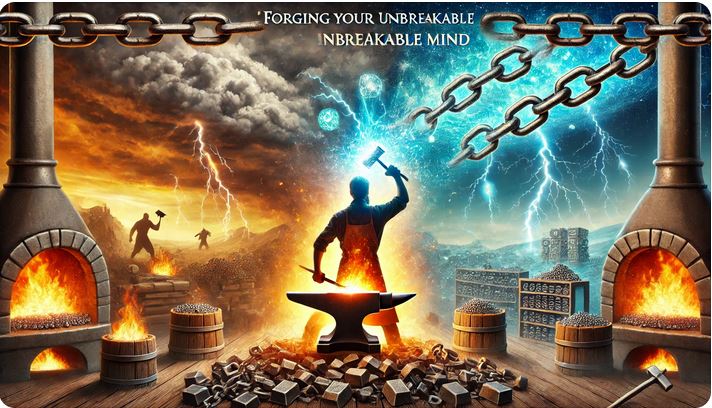Your Cart is Empty
Have you ever wondered if there’s a secret formula to skyrocketing your YouTube views?
15 Jan, 2025 11

Have you ever wondered if there’s a secret formula to skyrocketing your YouTube views?
Imagine unlocking a single strategy so powerful it could captivate your audience, boost your likes, comments, and shares, and turn your channel into a viral sensation. What if I told you this secret lies in something humanity has been drawn to for thousands of years—something that makes people laugh, cry, gasp, and, most importantly, stay tuned?
After creating over 300 videos and generating hundreds of millions of views, I uncovered the key to YouTube success: storytelling.
Yes, storytelling. Not fancy graphics, not clickbait titles, but the art of weaving a narrative that hooks your audience and keeps them watching. Why? Because stories are wired into our DNA. Since ancient times, humans have passed down knowledge and experiences through storytelling. It’s how we make sense of the world and connect with each other. And in the world of YouTube, it’s your ultimate tool to keep viewers glued to the screen.
Let me take you on a journey through some storytelling lessons that could transform your channel and make growing your YouTube business 10 times easier. By the end of this, you’ll know exactly how to craft stories that ignite curiosity, build credibility, and turn casual viewers into loyal fans.
The Psychology Behind Stories
Let’s start with a simple question: Why do you keep watching a movie after it begins?
It’s because you want to know how it ends, right? Whether it’s a romantic comedy, a thriller, or a documentary, there’s always a question pulling you forward. Will the hero succeed? Will the mystery be solved? That desire for resolution—what psychologists call the curiosity gap—is what makes stories so powerful.
On YouTube, keeping people watching is the holy grail. The longer viewers stay, the more likely they are to engage, share, and boost your video’s ranking. Stories are perfect for this because they’re designed to lead people through a journey, step by step, until they reach a satisfying conclusion.
Lesson 1: Curiosity is King
Here’s a quick exercise. Close your eyes and imagine standing in front of a sealed tomb in Egypt. It’s 1922. The air is thick with anticipation. The tomb has been untouched for thousands of years. You open the door, and your companion asks, “What do you see?” You pause, whisper, “Wonderful things,” and step inside.
Now, what’s the first thought that popped into your mind?
If you’re like most people, you’re dying to know: What’s inside the tomb? That’s the power of curiosity. It’s an itch that needs to be scratched.
When you’re telling stories on YouTube, your first goal is to create that itch. Start with a question, a mystery, or a hook that makes viewers desperate to find out what happens next. Questions like:
- “How did this YouTuber go from zero to a million views in just 30 days?”
- “What’s the one mistake costing you thousands of views?”
These questions spark curiosity and draw viewers in.
Lesson 2: Relatability Builds Connection
Now, you might be wondering: What kind of stories should I tell?
One of the most effective types of stories is a personal journey—especially one that highlights a challenge or failure. Let me share an example.
Years ago, I was struggling to get anyone to take me seriously. I was posting videos, but no one was watching. I felt like a joke. But instead of giving up, I decided to prove myself. I documented my journey to monetize a brand-new channel as fast as possible. The video went viral.
The results? Not only did I get massive views, but people finally started taking me seriously. My business grew faster than ever because I had something no one could argue with: proof.
What’s the lesson here? If you want to build credibility in your niche, tell a story about how you achieved a result your audience desires. Don’t have a success story? No problem. Share a failure and what you learned from it. Vulnerability makes you relatable, and relatability makes you memorable.
Lesson 3: Use Stakes to Raise Tension
Imagine watching a movie where nothing goes wrong. The hero sets out on a journey, encounters no obstacles, and achieves their goal without breaking a sweat. Would you care? Probably not.
Now think about the story of Apollo 13. When an oxygen tank exploded mid-mission, the crew’s goal shifted from landing on the moon to simply staying alive. The stakes skyrocketed, and suddenly, every moment was drenched in tension.
The same principle applies to your stories. If there’s nothing at risk, your audience won’t care. Define what’s at stake early on. What could be gained or lost? Why does it matter? For example:
- “If Pat didn’t make $110,000 in 30 days, his business would shut down. With only $40 left in his bank account, failure wasn’t an option.”
High stakes make stories compelling. Without them, even the most polished video will fall flat.
Lesson 4: Transformation is the Heart of Every Story
Here’s a surprising fact: Finding Nemo isn’t really about Nemo.
It’s about Marlin, his overprotective father, and the transformation he undergoes. By the end of the movie, Marlin learns to let go of his fears and trust his son. That’s the real magic of storytelling—showing how a character grows or changes.
When crafting your stories, ask yourself:
- How does my hero (or subject) transform?
- What lessons do they learn?
Even if your hero fails to achieve their goal, the audience will connect with the emotional journey and take away the same lesson. Transformation is what makes stories resonate on a deep, human level.
Lesson 5: Keep it Simple but Surprising
One of the biggest mistakes creators make is overcomplicating their stories. Instead of piling on unnecessary details, focus on clarity. Every element of your story should drive the viewer toward the transformation or resolution.
Start with the end in mind. Plan your story backward. What’s the takeaway? What’s the transformation? Then build your beginning and middle around it.
And here’s a bonus tip: Add a twist. Audiences love unexpected endings. Think of famous moments like the Red Wedding in Game of Thrones or the reveal in The Sixth Sense. A surprising conclusion makes your story unforgettable.
Lesson 6: Write for Retention
The way you write your story matters. Long, rambling sentences can lose your audience. Repetition bores them. But a well-paced rhythm keeps them engaged.
Compare these two examples:
- “This story is about success. It’s a great story. You will learn from it. Success is possible for everyone. Just do the work. Keep trying.”
- “This is a story about success. It’s possible for anyone, but only if you’re willing to put in the work.”
The second example is more dynamic and engaging. Varying sentence length creates rhythm, while concise language keeps your message clear.
If you’re not sure how to simplify your writing, tools like ChatGPT can help. Just input your sentence and ask for a simplified version.
Lesson 7: Master Your Delivery
Think of iconic narrators like David Attenborough or Morgan Freeman. It’s not just what they say; it’s how they say it. Tone, pacing, and emotion can elevate a story from good to unforgettable.
When your hero faces a setback, let your tone reflect the gravity of the moment. When they triumph, let your excitement shine through. Your delivery should match the emotional beats of your story.
Putting It All Together
To wrap up, here’s how you can structure your YouTube stories for maximum impact:
- Set the Scene: Introduce your hero and their problem.
- Raise the Stakes: Highlight what’s at risk.
- Build the Journey: Show the challenges they face and how they overcome them.
- Reveal the Transformation: End with a satisfying resolution or lesson.
- Add a Twist: Leave your audience with something unexpected and memorable.
Stories aren’t just entertainment. They’re a powerful tool for connection, persuasion, and growth. Whether you’re sharing personal experiences, client successes, or historical anecdotes, the principles of storytelling will keep your audience coming back for more.
So, what’s your next step? Look at your content calendar and think about the stories you can tell. Find a challenge you’ve faced, a lesson you’ve learned, or a unique perspective only you can offer.
And if you want to dive even deeper into storytelling strategies, don’t miss the next video where I break down how I used these techniques to generate millions of views. Click it now—you don’t want to miss this!
By incorporating curiosity, stakes, transformation, and a dynamic delivery, your storytelling will not only captivate your audience but also leave a lasting impact.

Share on Facebook

Share on X

Share on Pinterest
Latest From Internet Marketing
- How I Cloned a $19,000/Month Website Using AI in 24 Hours
- PROPAGANDA Edward Bernays AUDIOBOOK
- This AI Makes 8K Videos from ONE Prompt – You Won’t Believe the Results
- To elevate the Stoicism Mind University YouTube channel to over 1 million monthly visitors
- How I Transformed My Life and Built My Dream Reality
- Insanely Easy Micro Habits & Systems That Will Change Your Life
- You can change your whole life in 6 months—if you take back your 5 to 9
- Top Ai Agents in 2025
- From $0 to $1,000,000 in Just 3 Years | The Ultimate Wealth-Building Strategy
- From $0 to $1,000,000 in Just 3 Years | The Ultimate Wealth-Building Strategy
You submitted your comment for moderation.
Please enter a valid email address (Ex: johndoe@domain.com).
This is a required field.
This is a required field.
0 Comment(s)

